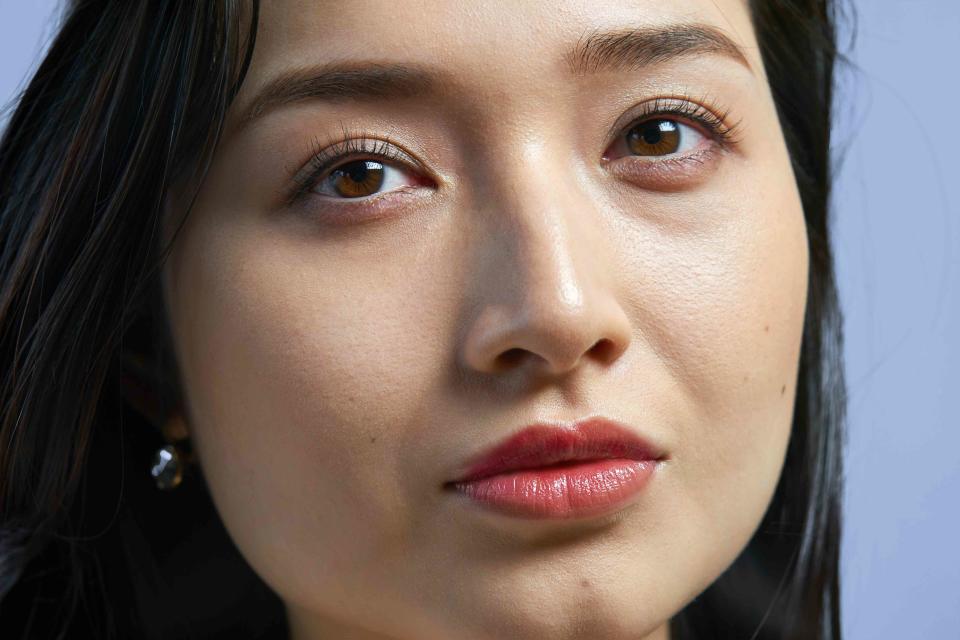Everything You Need to Know About Lip Blushing, the Semi-Permanent Treatment for Fuller Lips
Permanent makeup artists answer all your lip blushing FAQs.

blue sky in my pocket/Getty Images
There are a handful of beauty services out there that qualify as “high maintenance so you can be low maintenance.” Eyelash extensions and microblading—which nix the need for daily mascara swiping or eyebrow powder—are good examples of this. Lip blushing is another, and some people swear by the results this treatment offers. We tapped a few experts to ask them all our FAQs about lip blushing, including what the procedure’s like, how long lip blushing lasts, and how much you can expect to spend.
Meet the Experts
Limor Weinberg, FNP-BC, a board-certified nurse practitioner with a masters in aesthetics at The Clinic in Miami, Florida
Diane Bowman Mills, PAAM, certified permanent cosmetic technician and trainer at About Face in Brielle, New Jersey
Jackie Spagnuolo, FNP-BC, a board-certified nurse practitioner and founder of Beauty Nurse NYC
What Is Lip Blushing?
Lip blushing is a semi-permanent “tattoo” that naturally enhances your lip color and defines the shape. In other words, it delivers a “your lips but better” result—sans lipstick.
“It’s a form of semi-permanent makeup, similar to microblading for eyebrows,” explains Diane Bowman Mills, PAAM, certified permanent cosmetic technician and trainer at About Face in Brielle, New Jersey. “During the procedure, a professional artist uses a needle to deposit pigments into the lips, creating a subtle shade that can resemble a lip tint or blush.”
As the name implies, it’s less about creating a bold or severe lip color—like bright red or hot pink—but more about creating a natural-looking flush.
“As we move into an era of more natural beauty trends, lip blushing—when done correctly—can complement even the thinnest and most asymmetrical lips,” says Limor Weinberg, FNP-BC, a board-certified nurse practitioner with a masters in aesthetics at The Clinic in Miami, Florida. “I highly recommend lip blushing to every single one of my lip filler patients as, [in my opinion], the two make a perfect combination.”
What Is a Lip Blushing Treatment & Recovery Like?
Treatment sessions vary, but generally last between one and three hours, Mills says. Beforehand, the technician will apply a numbing cream to reduce any pain or discomfort, and they’ll continue to reapply it throughout the appointment to keep the area numb. They’ll also use a cold pack to help minimize swelling.
Jackie Spagnuolo, FNP-BC, a board-certified nurse practitioner and founder of Beauty Nurse NYC, says that it’s common to feel a “buzzing or vibrating” sensation during the process.
“Recovery time is usually seven to 10 days of healing, similar to tattoo recovery where the surface skin will scab and peel,” Mills adds. (This feels similar to dealing with chapped lips.) “During the healing process, approx 30% to 50% of the implanted color will be lost, and the remainder of pigment left in the lips will leave a softer tone than originally implanted.”
Sometimes, several appointments are required in order to get your desired effect. Mills says this might look like two to three sessions spaced out every eight to 10 weeks. It's essential to follow the aftercare instructions provided by the artist to ensure proper healing and long-lasting results.
Does Lip Blushing Hurt?
Lip blushing can cause some discomfort similar to microblading, injections, or microneedling. However, the area’s adequately numbed to minimize pain, and most people consider the treatment tolerable, Weinberg says.
How Much Does Lip Blushing Cost?
Cost varies depending on the artist’s experience and demand, how many sessions are recommended, and your geographic location. On average, Weinberg says you can expect to pay between $500 to $1500.
How Long Does Lip Blushing Last?
Lip blushing pigment naturally fades over time, usually lasting anywhere from one to three years, Spagnuolo says. How long it lasts depends on factors like your skin type, lifestyle, and maintenance. Touch-ups are common to maintain the desired color and shape.
Tips for Choosing Someone Reputable
It may be tempting to find the cheapest option for lip blushing treatments, but it’s important to find a highly skilled and reputable practitioner. Needles are involved—as are semi-permanent results—so you want to work with someone who’s equally versed in sanitization, professionalism, and artistry.
“All properly trained permanent cosmetic artists belong to one of two overseeing organizations that certify the artist has taken the necessary coursework to learn their procedures, including sanitation and sterilization procedures,” Spagnuolo says. “These organizations are identified as the AAM or the SPCP. Always consult with your artist first and ask to see their certification.”
Along with confirming their licensing, it’s also smart to request (or review) before and after images, unpaid public reviews and testimonials, and your technician’s personal experience.
For more Real Simple news, make sure to sign up for our newsletter!
Read the original article on Real Simple.

